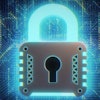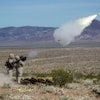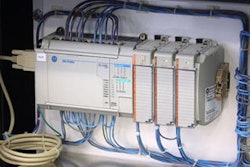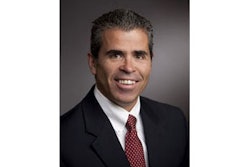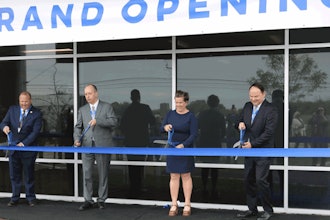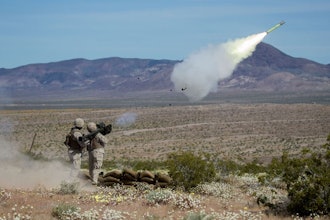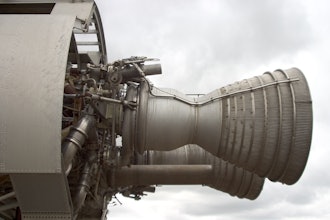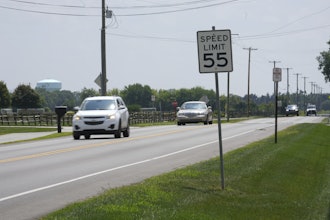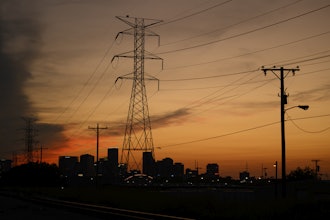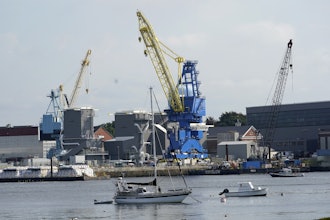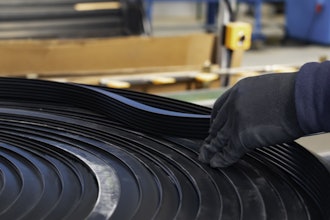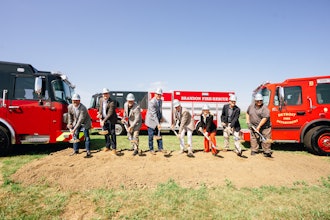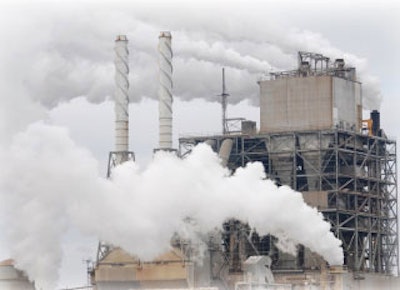
Today, approximately 95 percent of vehicles coming off of the automotive assembly line have refrigerant systems in them for air conditioning. Pressurized with a refrigerant, the system is checked for leaks before it leaves the facility. A technician holds a wand to the major piping connections of the air conditioner and waits for a device to alarm if a leak is detected. The technician is not looking for the level of refrigerant along the automotive assembly line, he is looking for whether the refrigerant is leaking from any fitting at a rate greater than preset tolerable limits and trying to locate where the leak is. “That is truly leak detection,” says Dr. Verne Brown, president of ENMET Corporation. “With true leak detection, you usually don’t care what the concentration is — you need to know where it is.”
Today’s industrial leak detectors are indispensable tools for protecting the environment, facilities, and workers alike, and have more specific sensors that are longer lasting and more portable than ever before, leaving manufacturers with a variety of choices when it comes to detecting and localizing, and even quantifying, leaks.
Listen Closely
“Leak detection can take the form of a lot of different technologies,” explains Brown, “ranging from soap bubbles to pressure drops.” A soapy film can be one way to detect leaks: apply a soapy film to a gas or water system that is under pressure and where the bubble expands is where the leak will occur. A pressure gauge can detect a leak in a pressurized plumbing or gas system: if the pressure gauge quickly drops, there is likely a leak to be found in the system.
“The best way to detect leaks is to use an ultrasonic acoustic detector,” says a U.S. Department of Energy Best Practices tip sheet. An ultrasonic gas detector will detect ultrasonic acoustic changes in the background environment noise, and the ultrasonic sound is localized to the source of emission. “All good leak detectors look for sounds in the 20 to 40 kilohertz range,” says Frank Moskowitz, AirMaster+ instructor and a Compressed Air Challenge Fundamentals instructor, Atlas Copco, “that part hasn’t changed.” This air leakage detector can be used to find leaks in compressed air and vacuum installations and works by “listening” to frequencies non-audible to humans. Equipment for ultrasonic leak detection includes the detection device, headphones, and a directional probe. A leak can be detected by being translated into a lower frequency that is within the range of human hearing and/or be observed as intensity increments on a meter or display panel. Moskowitz adds that what is new today is that companies are now offering reporting and analyses of the data collected by these tools — including trending reports and SCFM interpretation of sound.
“Less expensive units will still detect ultrasound,” Moskowitz adds, “but may not have the best noise cancelling headsets that eliminate ambient factory floor noises.” Less expensive units may also not have a laser pointer or onboard meters that pricier models can have.
Choose Wisely
“There is a move towards PID, Infra-Red, and optical gas detection, but these remain expensive options as development costs must be recouped,” says Lucien Tuinstra, product engineer at Gas Measurement Instruments. While these detection instruments each feature distinct advantages such as fast response, long operating life, and versatility, respectively, they are also all expensive methods of leak detection, explains Tuinstra.
With the variety of devices that have been developed to detect, alert, and quantify industrial leaks, manufacturers have their work cut out for them when trying to choose the right detection equipment to maximize uptime and safety in their facility. By identifying a wide range of applications where leak detectors are used, some device manufacturers have developed all-in-one instruments, which feature multiple modes of operation, reducing the need for multiple instruments. “This results in lower cost of ownership, reduced training needs, and increased productivity,” Tuinstra explains. For example, the seven modes of operation on one gas leak detection instrument includes leak test mode (measures methane in three different ranges), confined space mode (measures up to four gases simultaneously with audible alarms), barhole mode (tests underground gas leaks), carbon monoxide mode (measures CO directly in PPM), purge mode (measures methane from zero to 100 percent), sniffer mode (enables rapid leak detection with audible/visual Geiger), and pressure mode (measure from zero to 60 inches of water column via a pressure sensor on the instrument).
“In addition,” Tuinstra says, “an instrument management system can also be used to connect numerous instruments to a central database whereby each leak detector can be monitored for compliancy without being removed from the field.”
Adding to the choices in the realm of gas detection are gas detector alarms, which are not looking for leaks, but are looking for the level of hazardous gases. “If I want to comply with the EPA or OSHA on something, I need to know the level it will allow me to have in midair, or the level that they’ll allow in the breathing zone. And that’s a concentration,” explains Brown, “specified maybe as parts per million, or percent of something, or percent of lower explosive limit.” To determine the level of hazardous gas, the gas detector will have a display to show the concentration of the measured gas. And to do so, these devices tend to be specific for a certain chemical, such as nitrogen or oxygen. With increased specificity tends to come longer life, Brown adds, and they are “often twice or three times the lifetime of what they were about ten years ago.” Today’s leak detection sensors have a lifetime of about two years.
Try Before You Buy
“Try before you buy,” stresses Brown. “Ask for an evaluation unit.” He explains that trying out a unit for four to six weeks allows the leak detectors at a facility to be sure the instrument works for that facility’s specific application and that the users know how to safely use it. And Tuinstra agrees, “The first concern should be finding just the right solution to best fit a specific need or application.
“Accuracy and reliability are a must in order to protect lives and workplaces.” While you would expect a leak detector for hazardous materials to read zero while sitting on a desktop in an office because the chemical shouldn’t be there, if the same detector reads zero on the plant floor, there is not necessarily no chemical present. “Does it mean there’s no chemical there or does it mean that the sensor is dead?” asks Brown, “because [leak detectors] have no failsafe in that regard.” To prove that the device is working, he says frequent test exposures to the gas in question are required and manufacturers need to look at the device’s manual to be sure the facility can comply with the recommended frequency of calibration. “Another good reason to try before you buy.” The manual will also contain the device’s recommended maintenance schedule.
“Leak detectors require the same care as any good electrical meter would,” Moskowitz says. “Damage can occur due to mishandling or exposure to the elements.” While a warranty could come in handy due to this common “abuse,” Brown says, the warranty should not play a huge role in the purchasing decision. “Today, for competitive reasons, most devices are being offered at two-year warranties anyway,” he explains. “The fact that the company has either service centers around the country or has a reasonably fast turnaround at a factory repair department would probably be more important than whether somebody says ‘my device lasts two years.’”
Brown also strongly recommends receiving leak detection training from the device’s manufacturer. A one hour session where two to three people train on the device that the facility has purchased — a live, interactive session where somebody “tells you how to charge it, turn it on, zero it in fresh air” can be invaluable, and removes the risk of relying on the users to read the device’s manual cover to cover to learn how to detect potentially hazardous leaks in a facility. “These are extremely valuable and motivational training sessions,” he says.
Brown adds that the training is one more thing to consider when investing in leak detection equipment and deciding “if that entity is deserving of your business.”

